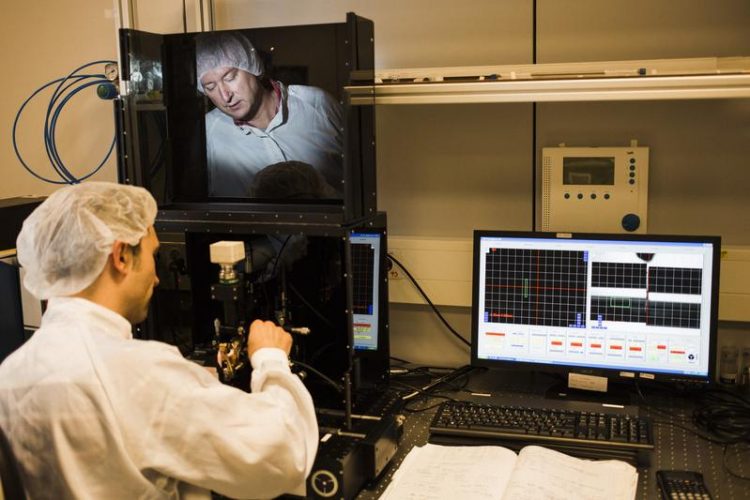Leibniz Institut of Photonic Technology manages European research project for new fiber lasers

Matthias Jaeger manages the European research project for novel fiber lasers at Leibniz IPHT. Sven Döring/ Leibniz IPHT
The European Union is supporting the project, in which research institutions from Spain, Poland and Great Britain cooperate, as part of the “FET Open” programme with the aim of promoting ideas for radically new future technologies. Over the next four years it will provide almost 3 million euros for this purpose, 900,000 euros of which for the Leibniz IPHT.
“We are very pleased that we are the only consortium coordinated by a German institute to have been selected for this prestigious and highly competitive program,” says Dr. Matthias Jaeger from Leibniz IPHT, head of the “NCLas” (“Nanocrystals in Fiber Lasers”) project. By incorporating nanocrystals into a fiber, the scientists want to open up areas that are relevant for biomedical applications but for which there are no practical solutions available yet.
For example, one planned fiber laser targets a spectral range in which tissue is very transparent so that even deep layers become visible. Another fiber laser is of great interest for telecommunications, where information is transmitted via the optical fiber. “The more wavelengths the laser addresses, the more channels are available,” explains Matthias Jaeger. “In addition, our research can pave the way for applications for optical fibers that are still a vision of the future today.
There is also great commercial interest in researching new fiber lasers. “They are currently the most successful laser concept,” says Jaeger, who heads the “Active Fiber Modules” working group at Leibniz IPHT. The reasons: They have a very good beam quality even at very high powers, but cause lower costs and less maintenance than solid-state lasers.
They also enable compact, robust and energy-efficient light sources. With the Jena-based company Lasos Laser technology “NCLas” is already with economical partners. The European research partners of the project are the Fraunhofer Institute for Ceramic Technologies and Systems Dresden, the University of Cantabria in Santander, Spain, the Wissenschaftlich-Technische AGH-Universität Krakau and the University of Surrey in Guildford, England.
With the “FET Open” (“Future and Emerging Technologies”) programme, the EU is promoting unconventional new research ideas at an early stage that aim at fundamental breakthroughs for new technologies. The objective is to question existing paradigms and enable research at the frontier of knowledge. 375 research institutions submitted projects, 38 of which were selected.
https://www.leibniz-ipht.de/en/institute/presse/news/detail/for-new-possibilitie…
Media Contact
All latest news from the category: Physics and Astronomy
This area deals with the fundamental laws and building blocks of nature and how they interact, the properties and the behavior of matter, and research into space and time and their structures.
innovations-report provides in-depth reports and articles on subjects such as astrophysics, laser technologies, nuclear, quantum, particle and solid-state physics, nanotechnologies, planetary research and findings (Mars, Venus) and developments related to the Hubble Telescope.
Newest articles

High-energy-density aqueous battery based on halogen multi-electron transfer
Traditional non-aqueous lithium-ion batteries have a high energy density, but their safety is compromised due to the flammable organic electrolytes they utilize. Aqueous batteries use water as the solvent for…

First-ever combined heart pump and pig kidney transplant
…gives new hope to patient with terminal illness. Surgeons at NYU Langone Health performed the first-ever combined mechanical heart pump and gene-edited pig kidney transplant surgery in a 54-year-old woman…

Biophysics: Testing how well biomarkers work
LMU researchers have developed a method to determine how reliably target proteins can be labeled using super-resolution fluorescence microscopy. Modern microscopy techniques make it possible to examine the inner workings…





















